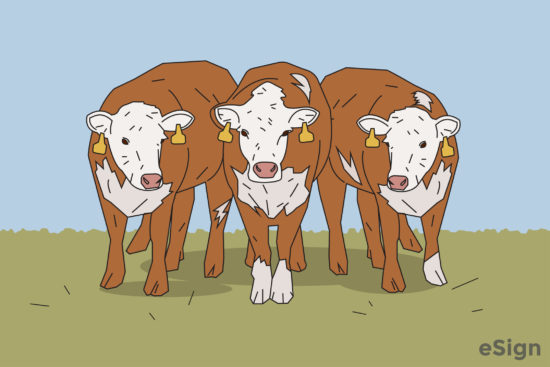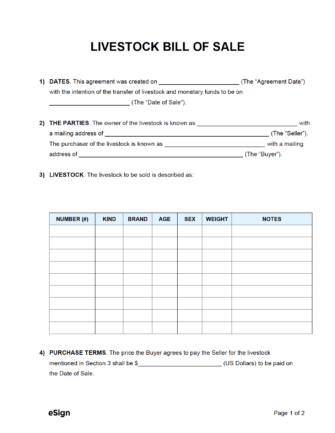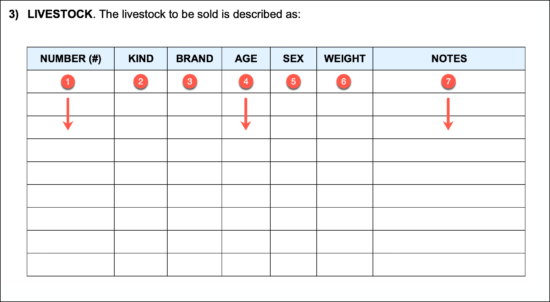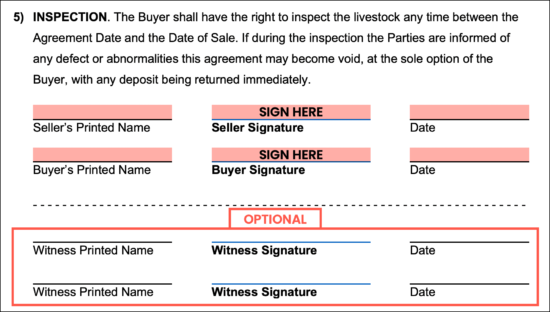A livestock bill of sale is a printable document used for transactions where farm animals are sold from one entity (or person) to another. The document includes a table that allows the livestock owner to sell up to nine (9) animals, although it can be used for single animal sales as well.

The form can be used for selling the following types of animals:
- Cattle
- Horses
- Sheep
- Pigs
- Goats
- Donkeys
- Llamas
- Buffalo
- Mules
- Camels
What is a Livestock Bill of Sale?
A livestock bill of sale is completed once two (2) parties have agreed to enter into negotiations regarding the sale of farm animals. While the bill of sale isn’t necessarily a requirement, it allows the buyer to prove ownership if it ever comes up.
How to Write
Download: PDF, Word (.docx), OpenDocument
Step 1 – Transaction Date
The agreement can be completed by either the buyer or seller, although it is ordinarily completed by the seller. In the first three (3) fields, enter the day, month, and year in which the bill of sale is being filled out. Then, enter the date that both the money and the livestock will change hands.
Step 2 – Buyer and Seller Information
Write the full name of the seller (owner) and their address (street, city, and state). Repeat for the buyer.
Step 3 – The Livestock
Provide all the necessary pieces of information for each individual animal in the table.
- The “Number” is the serial number attributed to the animal (ear tag, branded, tattooed, etc.).
- “Kind” refers to the type of animal (sheep, cattle, horse, etc.).
- “Brand” refers to the location of the branding or tag on the animal.
- “Age” is the age of the animal, either in years or months.
- “Sex” can be either male (M) or female (F).
- “Weight” is the rough or exact weight of the animal. Specify the units if different than pounds.
- “Notes” is an area where the seller can include any other important information regarding the animal.
Step 4 – Purchase Terms
Enter the total sale price for the livestock.
Step 5 – Signing
The buyer and seller should sign and print their name and provide the date in the appropriate fields. Both parties can sign their names using eSign for free, if desired. Alternatively, the form can be signed by hand. The two (2) witness fields are there to provide the parties with additional verification to their signatures (optional).
Step 6 – Notarization
The final section provides the parties with an area to have their signatures notarized. Like the witness fields, this area is optional, but it adds validity to the buyer and/or seller’s signatures.







